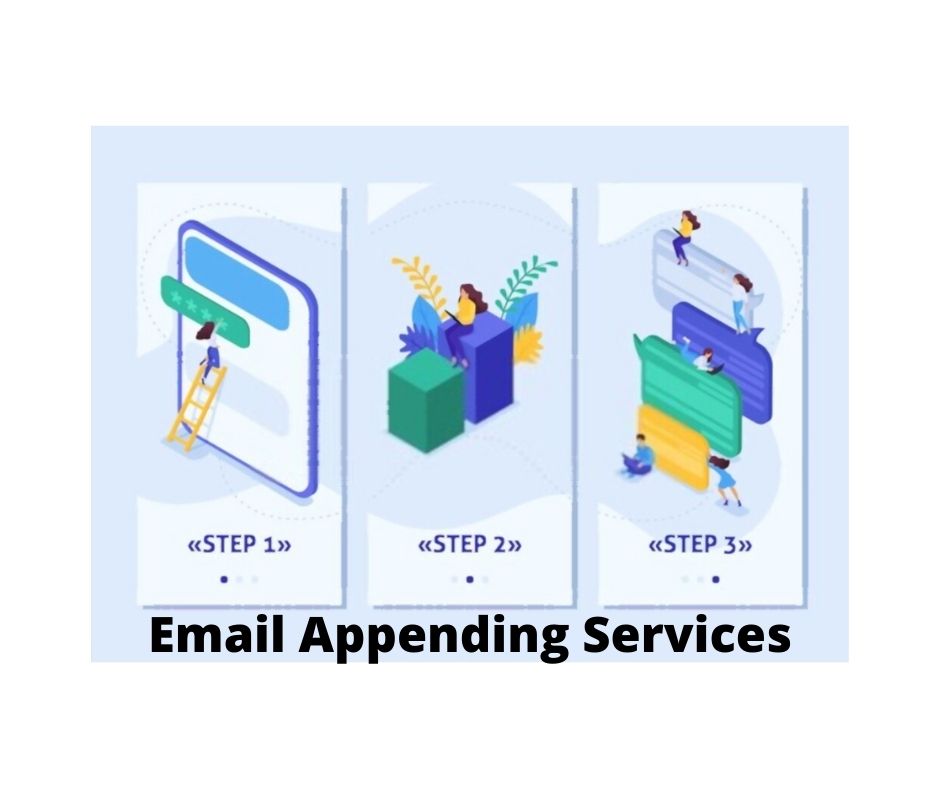Your customer database is one of your most valuable assets, filled with loyal patrons and promising leads. But what if you only have their names and addresses? You’re missing the key to direct, cost-effective communication: their email address. How do you bridge that gap without alienating the very customers you want to engage?
The answer might be email appending, the process of adding missing email addresses to your database. It can be a potent strategy to amplify your marketing reach and drive significant growth.
However, a fine line separates ethical, effective appending from a practice that can destroy your brand’s reputation and deliverability. This guide will walk you through the essential do’s and don’ts to ensure you leverage email appending for growth, not grief.
What is Email Appending and Why Should You Care?
At its core, email appending is a form of data enrichment. You take the customer data you already have (like names, postal addresses, or phone numbers) and give it to a specialized service. This service matches your data against its own large, verified database to find the corresponding email addresses, which are then “appended” to your records.
This is a key component of a broader data appending strategy, which can also add other valuable information like demographics or purchase history.
The business case for this is compelling. A complete customer database is a powerful tool. Consider these industry benchmarks:
- Exceptional ROI: Email marketing has an average email marketing ROI of $36 for every $1 spent. Leaving a communication gap means leaving money on the table.
- Constant Decay: Business-to-business (B2B) data decays at a rate of over 2% per month as people change jobs, get married, or switch email providers. Maintaining an accurate list is not a one-time task; it’s an ongoing necessity.
Imagine your customer record looks like this:
Before: John Smith, Anytown, USA.
After: John Smith, Anytown, USA, [email protected].
That simple addition opens a direct, personalized, and highly effective marketing channel. The core conflict, however, lies in how you get that email. The promise of a bigger list can quickly become the peril of being labeled a spammer if not handled with care and transparency.
The DO’S: How to Approach Email Appending Ethically and Effectively
To reap the rewards of email appending without the risks, follow these fundamental best practices for ethical email marketing.
DO Start with Your Own Customer Database The unbreakable rule of ethical appending is to only use it for individuals who have a pre-existing business relationship with you. These are your past purchasers, loyalty program members, or even people who signed up for a physical newsletter.
You are not finding new leads; you are simply opening a new line of communication with people who already know and have engaged with your brand. Never use this process on a list of cold prospects.
DO Vet Your Email Append Service Provider The quality of your results depends entirely on the quality of your partner. A reputable service is your best defense against bad data and compliance issues. Before signing any contract, ask any potential email append services these critical questions:
- What is your matching logic? Do they require multiple data points (e.g., name + postal address) for a confident match? The more precise, the better.
- Where do you source your email data? Reputable providers build their databases from permission-based sources, such as e-commerce checkouts and newsletter sign-ups where consent was given.
- Do you have a transparent opt-in process? They should be able to prove that the email addresses in their database were collected ethically.
- How do you ensure data accuracy and deliverability? Ask about their data hygiene processes, such as how often they verify emails and remove inactive ones.
Read More:- Data cleaning is no rocket science
DO Send a Permission-Based Welcome Email This is the single most important step in the entire process. Once you receive the appended email addresses, do not simply add them to your general marketing newsletter. The very first email they receive must be a dedicated welcome message that acknowledges your existing relationship and explicitly asks for their permission to continue contact via email.
Here is a simple template:
Subject: A Quick Hello from [Your Company Name]
Hello [Name],
You are receiving this email because you previously purchased from us at [Your Company Name] / signed up for our loyalty program. We’ve recently updated our customer records and would love to keep you informed about our latest offers, company news, and exclusive content via email.
If you’d like to stay in touch, no action is needed! If you’d prefer not to hear from us by email, you can easily unsubscribe here: [Link]
We’re glad to have you as a customer.
Best, The [Your Company Name] Team
This transparent approach respects the customer and gives them control, building trust from the very first interaction.
DO Prioritize Data Hygiene Effective email list building is an ongoing effort. Once you send your welcome campaign, you must immediately remove any hard bounces from your database.
Continuing to send emails to invalid addresses will damage your sender reputation and improve email deliverability in the long run. Similarly, honor every unsubscribe request instantly and without question.
The DON’TS: Practices That Will Damage Your Brand and Deliverability
Avoiding common pitfalls is just as important as following best practices. Steering clear of these “don’ts” will protect your brand and your bottom line.
DON’T Append Emails for a Purchased or Rented List This cannot be overstated. Taking a list of strangers you bought from a data broker and then running an append process on it is compounding one bad practice with another.
These individuals have no relationship with you and did not consent to be contacted. This is a surefire way to get high spam complaint rates, get blacklisted by Internet Service Providers (ISPs), and permanently damage your sending domain.
Read More:- Pros & Cons Of Magento Ecommerce
DON’T Hide the First Point of Contact Never skip the permission-based welcome email. Dropping a newly appended email address directly into your weekly promotional campaign is jarring and unwelcome. It feels intrusive because it is.
This approach leads to confusion (“How did they get my email?”) and anger, which results in spam complaints that cripple your ability to reach even your most loyal, opted-in subscribers.
DON’T Ignore Data Privacy Regulations Data privacy is not just a buzzword; it’s a legal requirement. When appending emails, you must be mindful of regulations like:
- The CAN-SPAM Act (U.S.): This law requires that your emails clearly identify who they are from, provide a valid physical address, and feature a clear and conspicuous unsubscribe link. The welcome email strategy helps satisfy these requirements naturally.
- GDPR (E.U.): The General Data Protection Regulation is much stricter and requires explicit, provable consent before you can email anyone in the European Union. Standard email appending is often not compliant for reaching EU citizens unless the process can prove unambiguous consent was granted at the point of data collection.
Understanding and respecting these laws is about protecting your business, not just checking a compliance box.
DON’T Choose an ‘Email Append Service’ That Just Sells You a List Be wary of any vendor whose service sounds too good to be true. Legitimate email append services perform a matching service against your existing customer data.
Illegitimate operations will simply sell you a static list of unverified email addresses under the guise of “appending.” If their process doesn’t involve you providing your own data for a match, walk away.
Build Your List the Right Way
Email appending, when done correctly, can be a valuable and legitimate part of your marketing strategy. It allows you to deepen relationships with customers who already know and trust you. The path to success is paved with transparency and respect for the customer.
To summarize, the core principles are simple: DO start with your own customer database, carefully vet your vendors, and always send a permission-based welcome email. And DON’T ever use appending for purchased lists or try to hide your intentions from the recipient.
At its heart, a successful email custom list building strategy is built on the foundation of ethical email marketing. By following these guidelines, you can unlock the full potential of your database and drive meaningful results.


